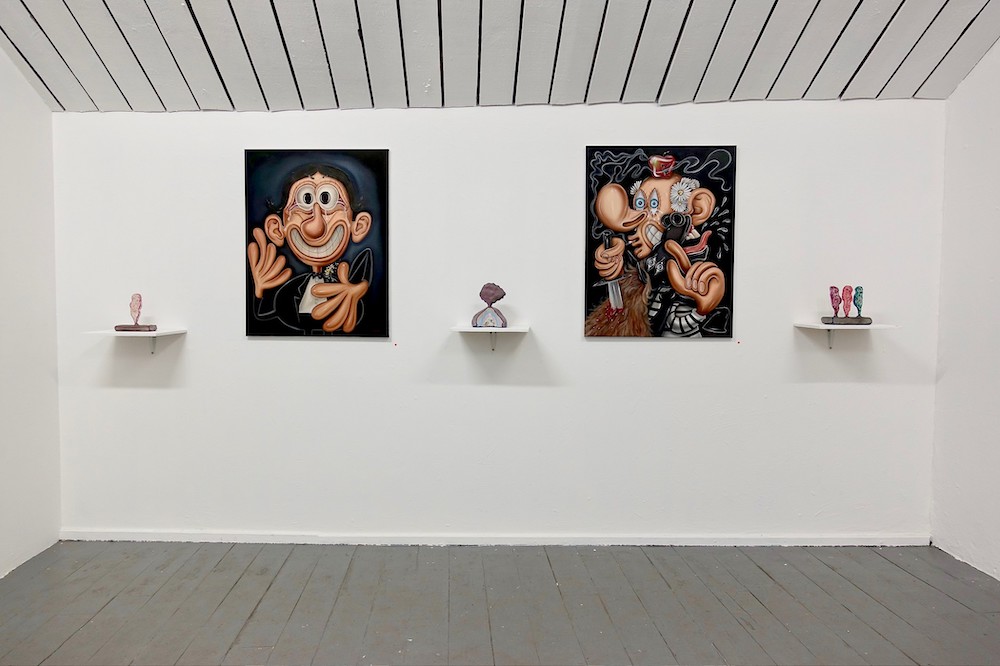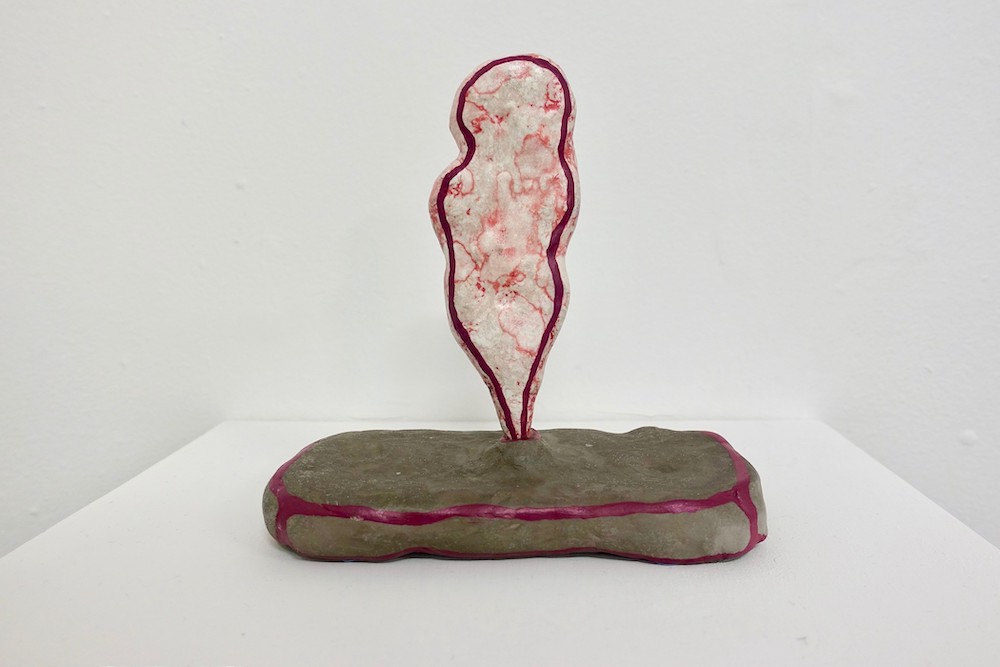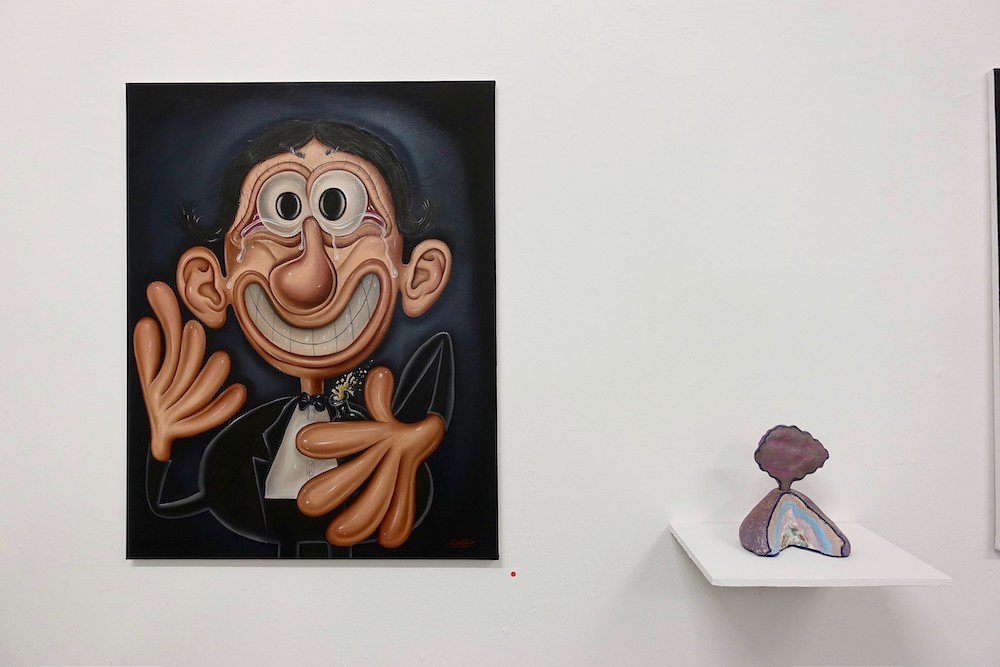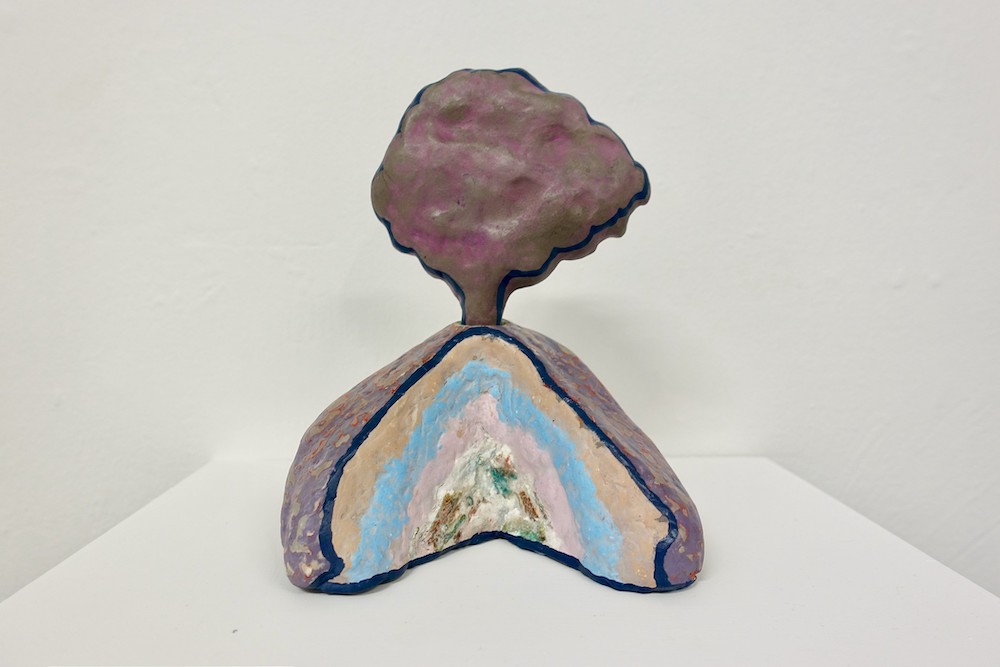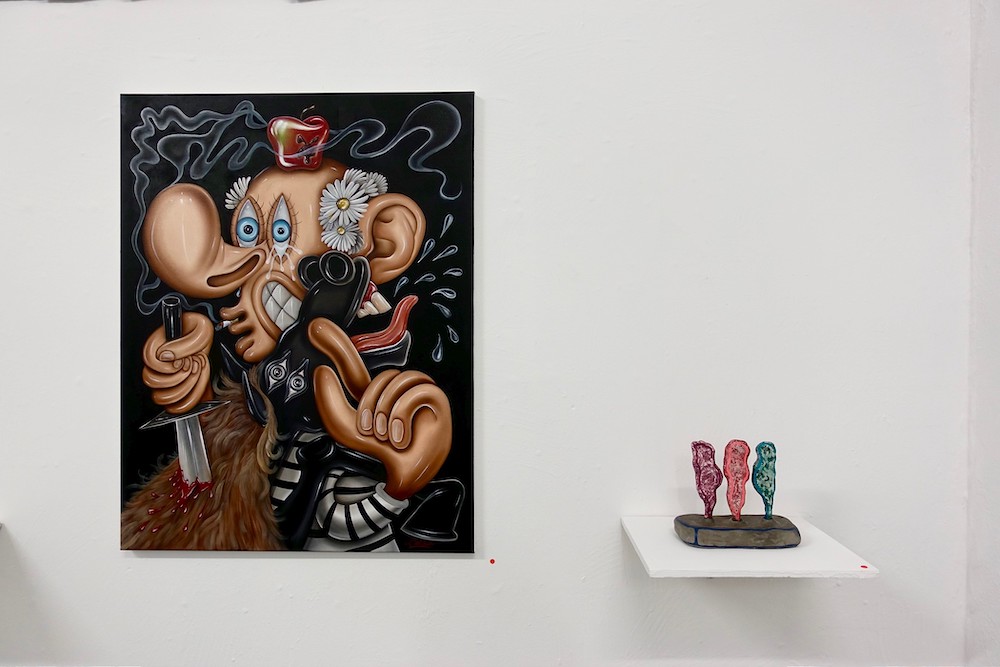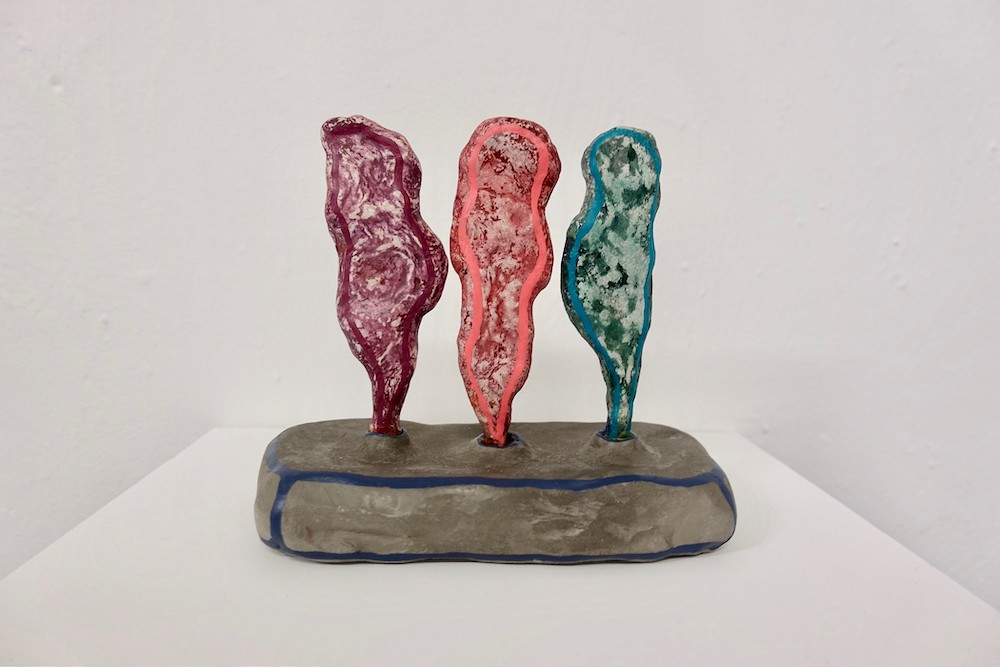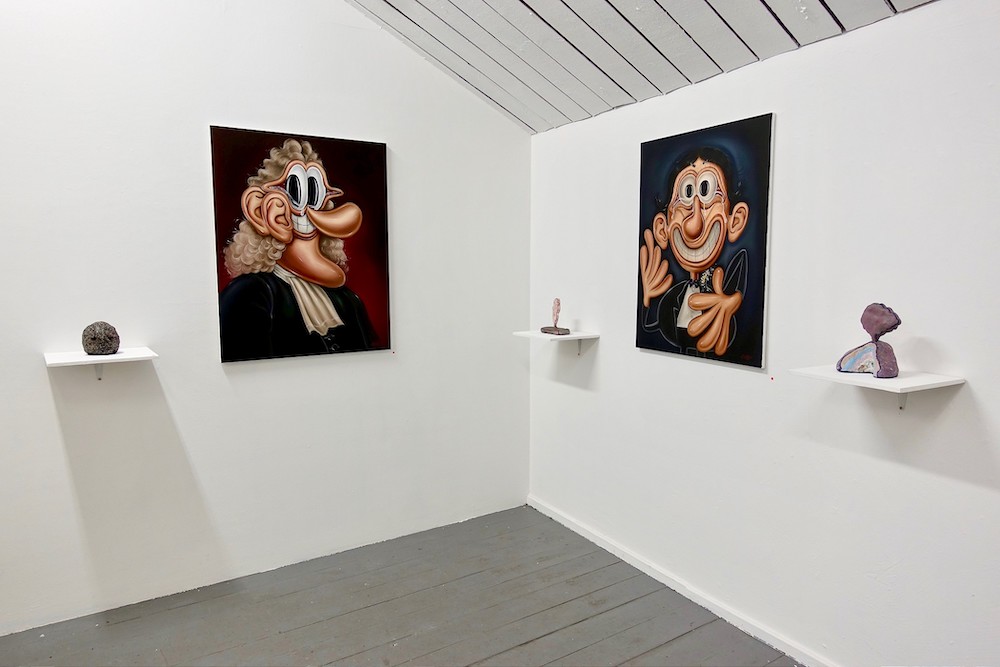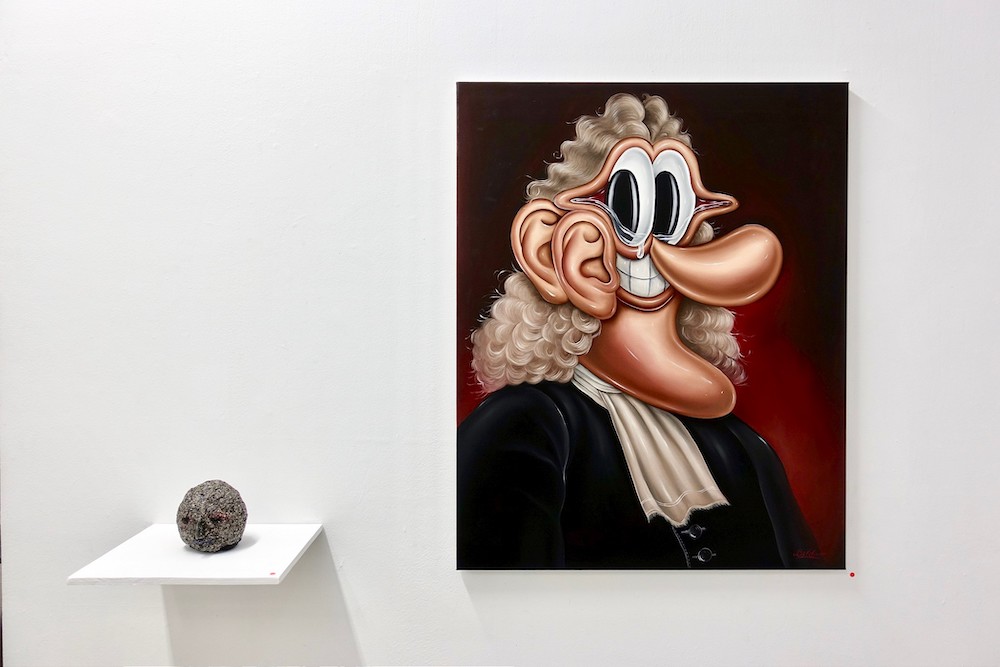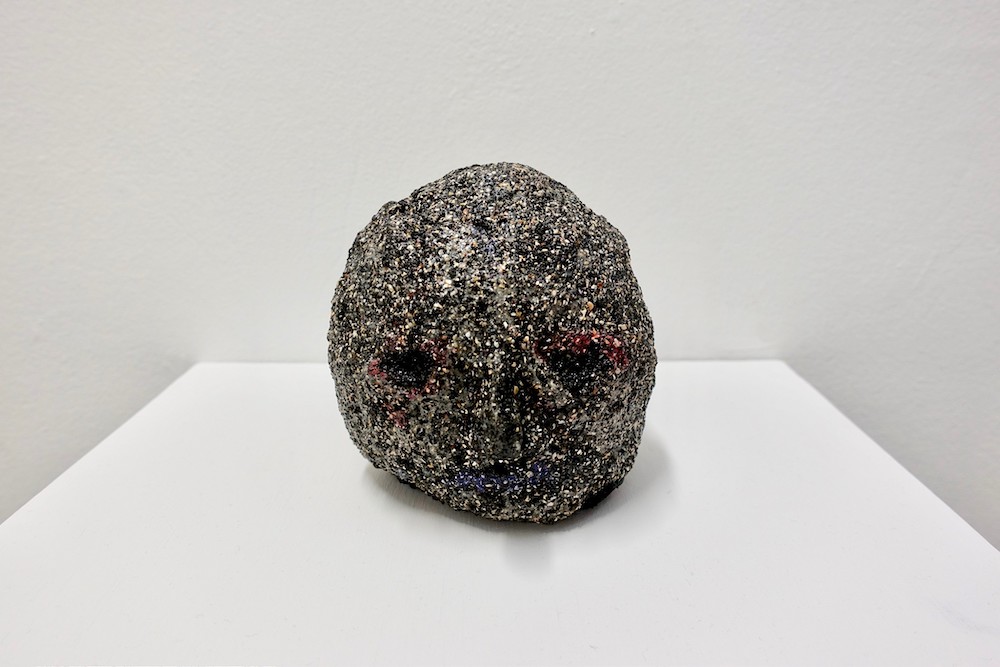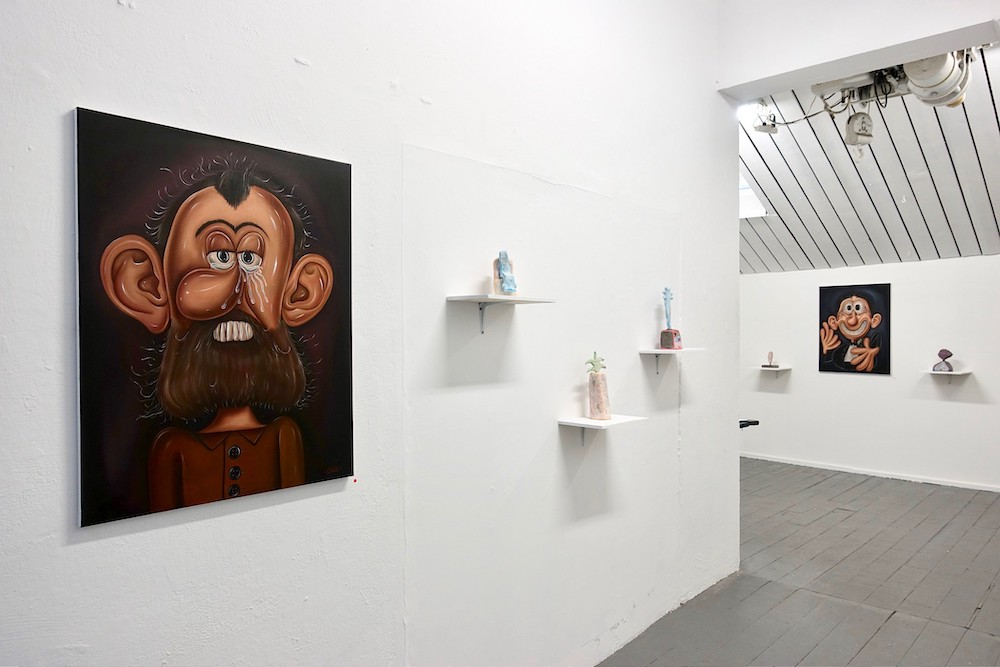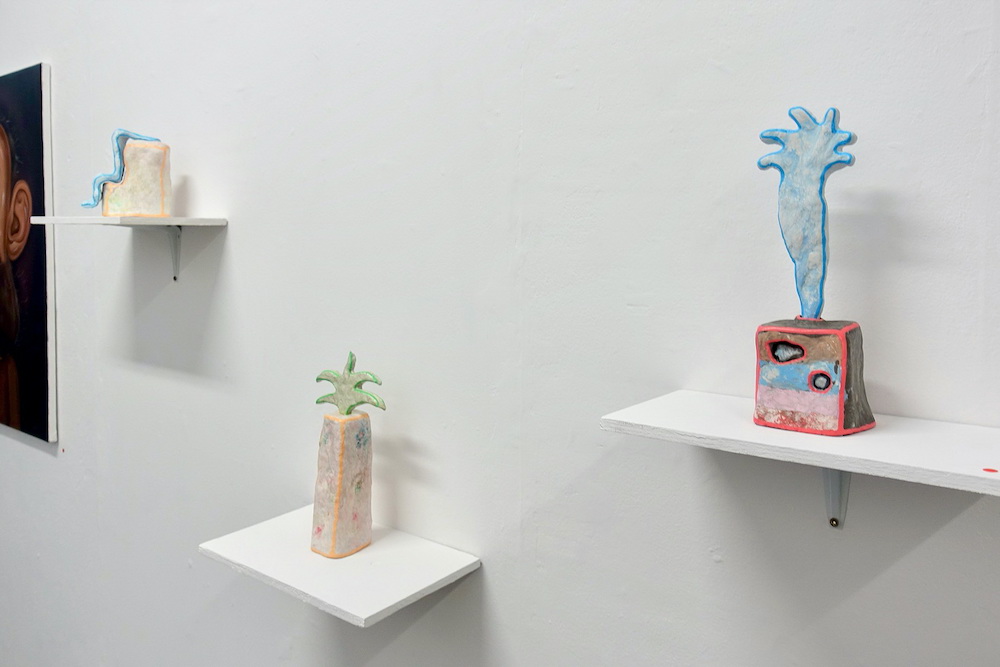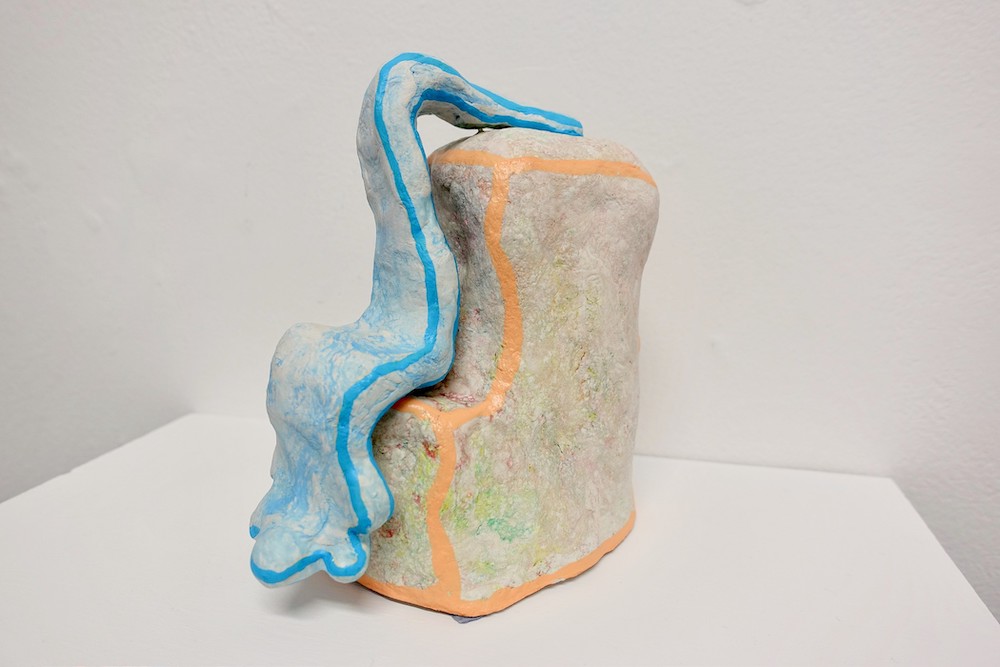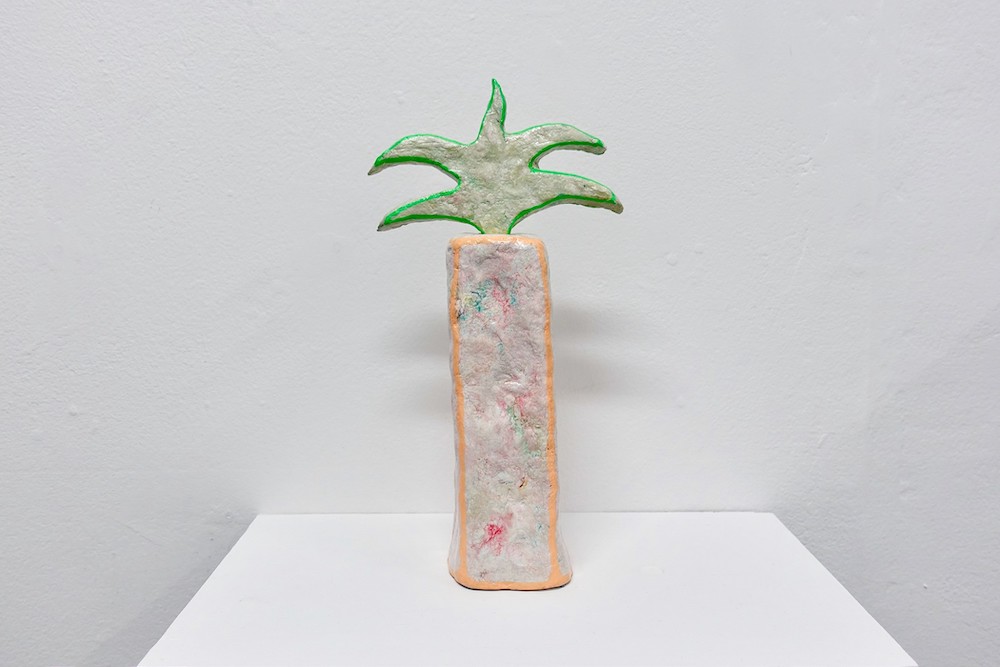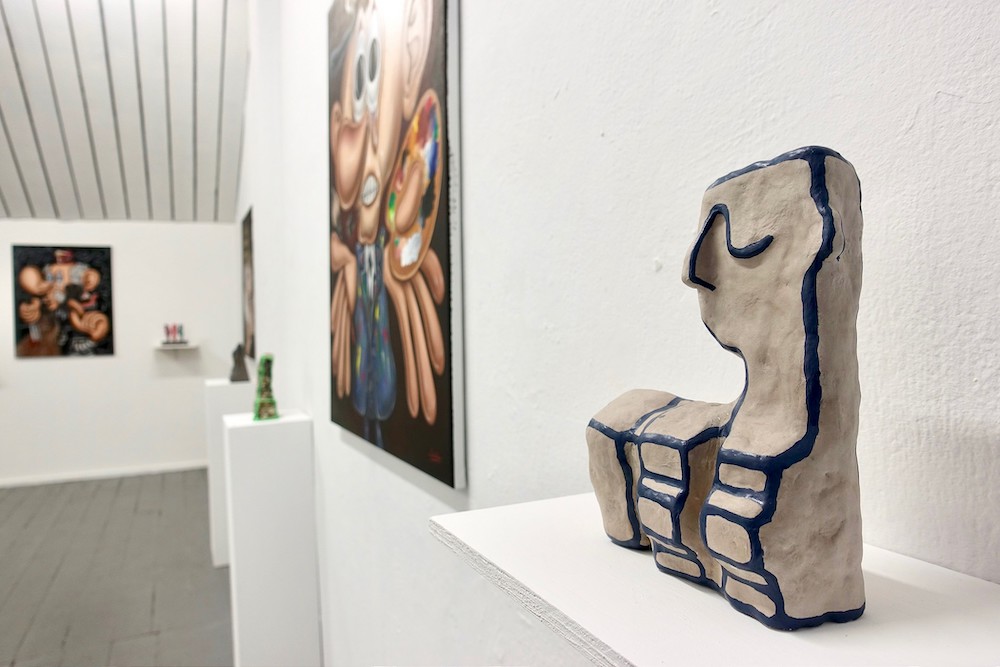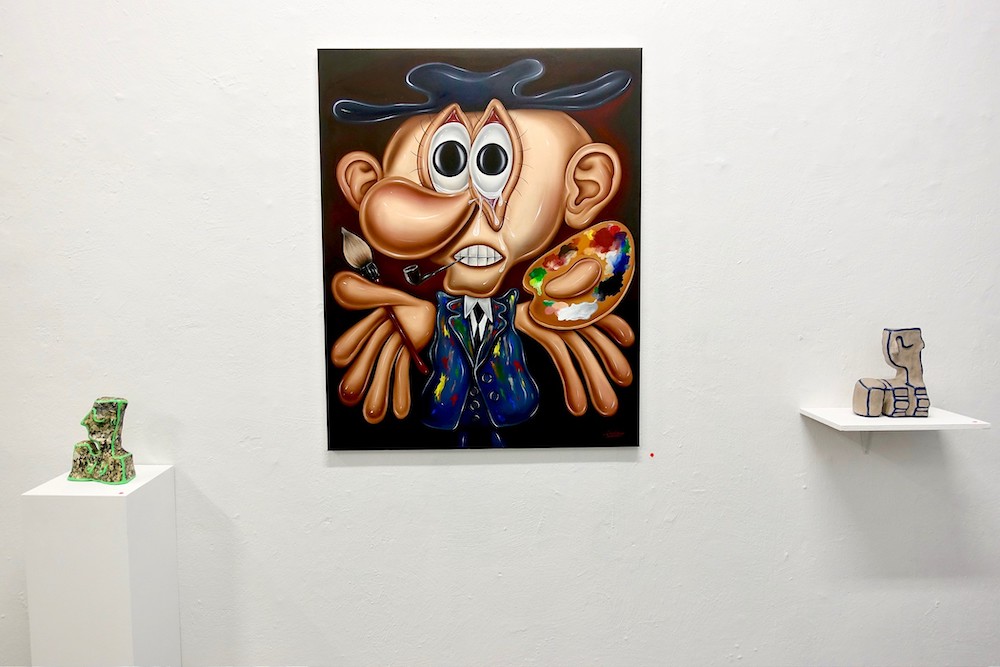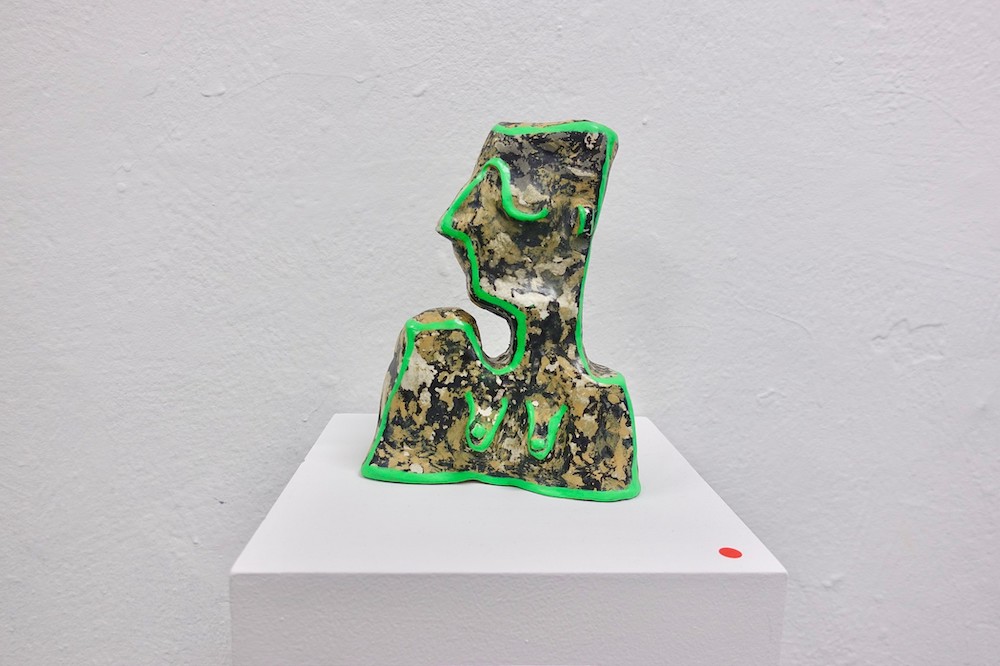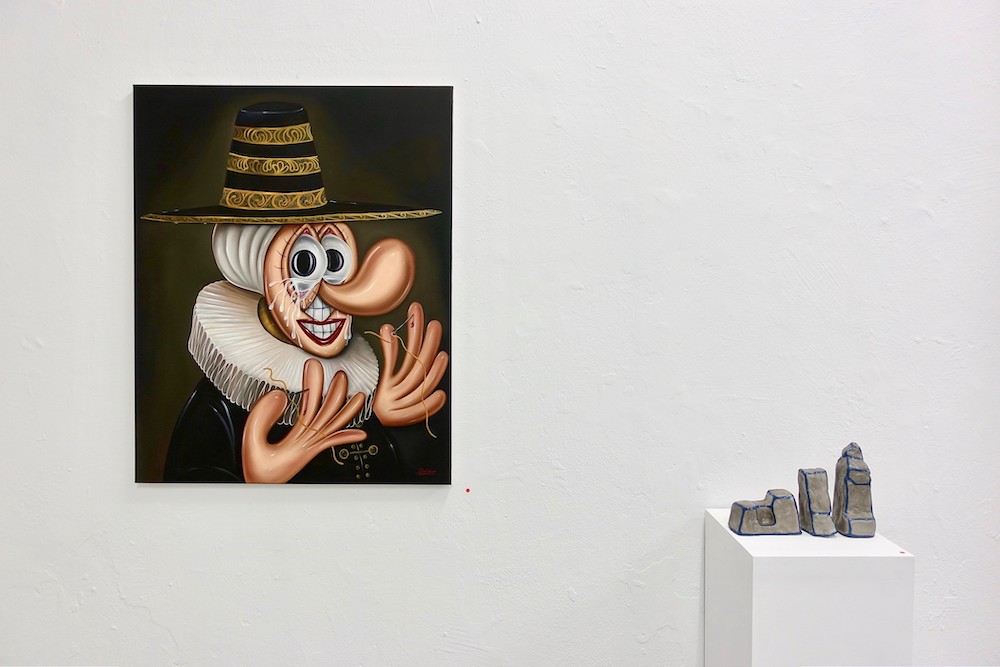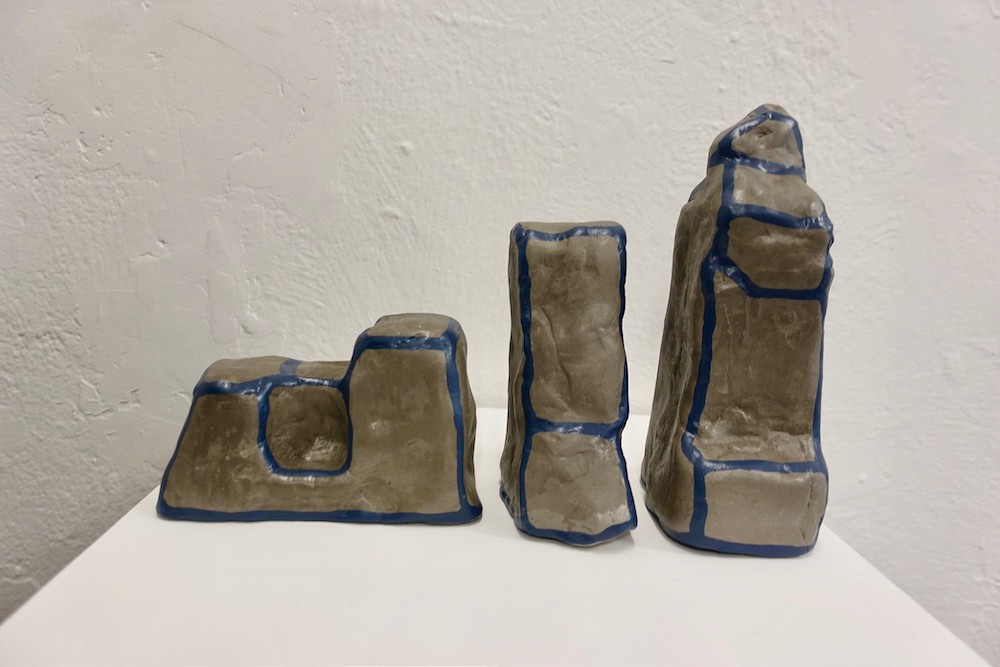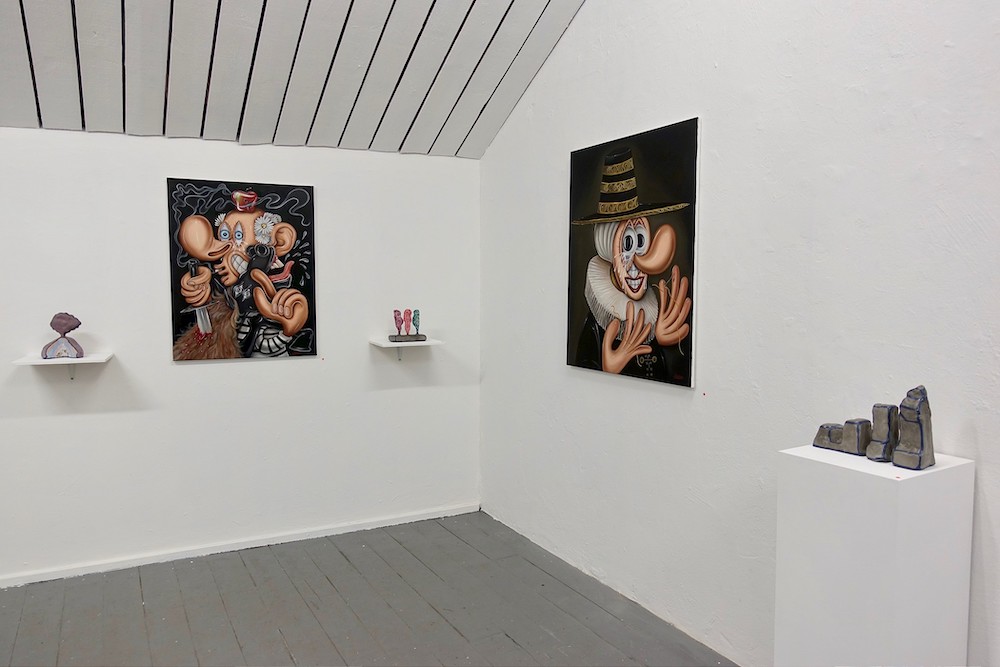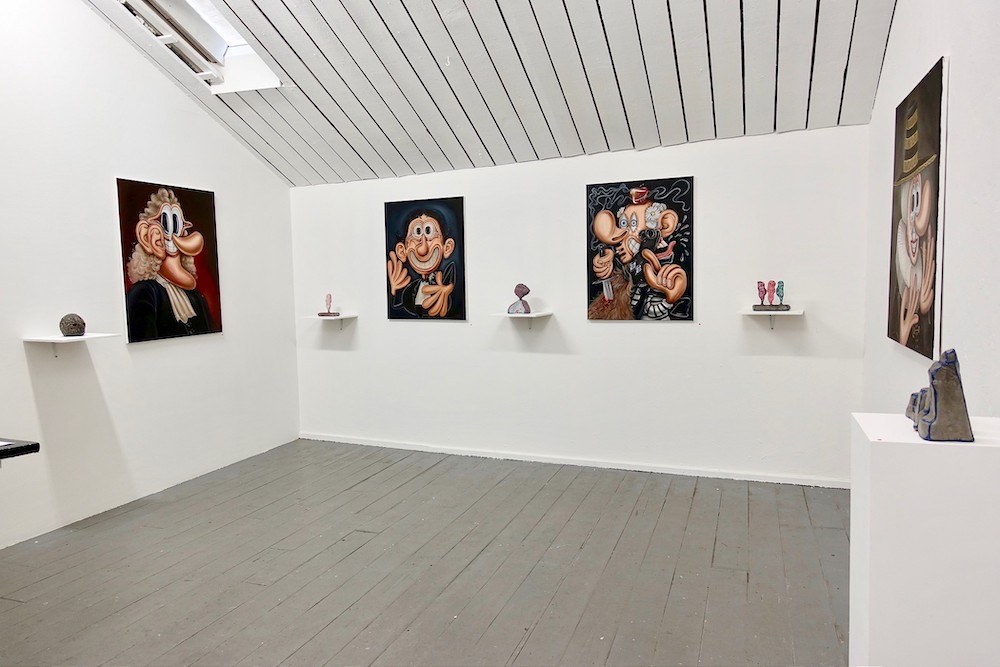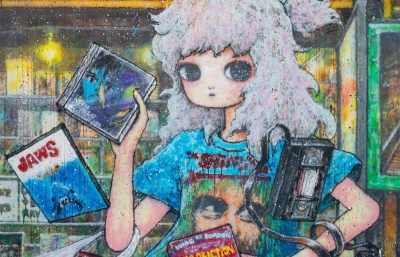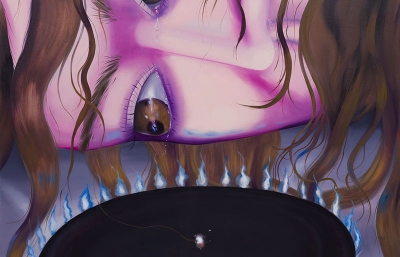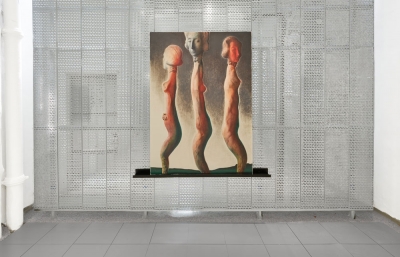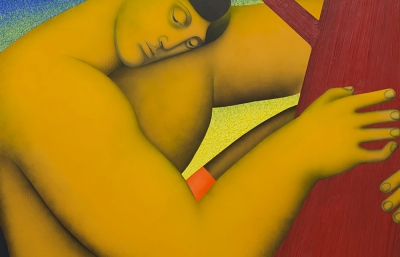Chicago-based art couple Patty Spyrakos and Baldur Helgason extended their annual visit to the latter’s homeland of Iceland and even managed to put on a show together in the country's capital. Exhibiting works created during their stay, they presented a new series of oil paintings and sculptures at Gallery Port, an artist-run exhibition space and studio in downtown Reykjavik.
We've been showcasing Helgason's work both on our website and in the magazine, and just can't get enough of his quirky, comedic and vulnerable character as he bends and adapts to situations and emotional conundrums. While serving as a great technical model, the funny figure serves as a conduit for better understanding of the practice of painting, a portal of introspection through which Helgason can express himself in a more honest and open way. However, after a couple of recent solo presentations that continued to portray the familiar, nose-centric, striped shirt-wearing guy in a variety of settings, things seem to take a sharp turn.
"During the lockdown in Chicago, I wasn’t able to paint as much because my kids were out of school and I was spending more time with them. But it did allow me to step back, look through my art books, and jot down which paintings or artworks were speaking to me at that moment. We also signed up for the Criterion Channel, and we were watching all these classic movies by the likes of Fassbinder, Bergman, and Jaromil Jireš. Then, a few months ago we flew to Iceland to spend time with my family. This allowed us to get more childcare and we were able to get back in the studio where I quickly realized how that little break had an enormous effect on my process. I began to prioritize the mood I wanted to set in the paintings rather than going off a preplanned sketch, and allowed myself to work out the narrative through the gestures of painting."
The direct result of the new approach is a very compact series of classical portraits that were inspired by the Icelandic banknotes which eschew politicians for painters, poets, craftspersons and other cultural heroes. "I naively assumed that the illustrations on the bills of these famous Icelanders were somewhat accurate," Helgason discloses about his arcane research and the surprising results. "On one of the bills, there’s this distinguished scholar from the 1600s with a big beard holding up what I assume to be a bible. Then I started looking up other drawings or paintings of him and found there to be only one known portrait of him from that time, and the illustration the bill was based on is a very crude childlike drawing from the 1600s. That blew my mind because I always thought the picture on the bill was an accurate representation. This made me want to investigate the rest of the folks on these bills, and sure enough, the intricate illustrations on the bills are almost all fabricated on these rather simple portraits from hundreds of years ago. I saw this as the perfect opportunity to do my own take on Icelandic cultural heritage and tackle the genre of history painting. The paintings in the show represent the famous historical figures of each of the Icelandic bills."
Working with the location-specific influences is something that his partner, Patty Spyrakos, also utilized in her contributions to the presentation. While her last show there focused on Icelandic comfort foods such as hot dogs, chocolate milk, sheep's head, and expressionist figurative sculptures of mystical characters from Norse mythology, this body of work revolves around landscape elements and folklore. "I think it's just a tendency to feed off and assimilate myself into the culture," she explained about working with local influences. "I want the Icelanders to like me! But also, I started having visions of volcanoes just before I began making the work. I think it was a kind of metaphor my head came up with to make sense of the collective mind erupting and transforming. So I focused on elements of the landscape that are in the process of purging and transmogrifying—volcano, geysers, glaciers, as a parallel to the collective human psyche at present, and my own internal 'stuff.' Along with those specific landscape motifs, the presentation includes a couple of figures of Huldufólk, or hidden people, supernatural beings intertwined with that landscape, creating a closed circle between people and nature.”
Made from air-dried clay, sand, and/or acrylics the sculptures are marked with almost straight, grid-like outlines on essentially organic shapes, revealing the direct inspiration from Dubuffet. "I grew up seeing Monument with Standing Beast in downtown Chicago," citing the roots of this influence, and "it always stood out to me, more so than the Picasso and Calder sculptures that adorn the Loop, to the extent that, as a kid, I thought the Dubuffet was a Picasso because Picasso was supposed to be "best." I also have a history in graphic design and I wanted to kind of merge the organic clay bits with clearly defined borders that they seem to be resisted. It was just kind of fun to do, to make it a bit more pop, and a bit more like something my kids would be into." —Sasha Bogojev

